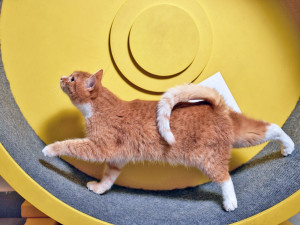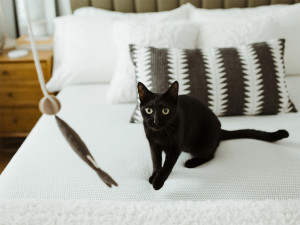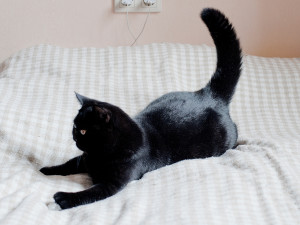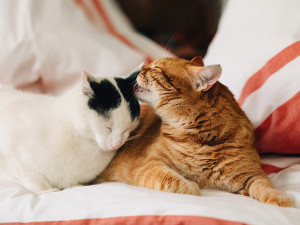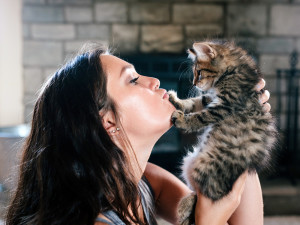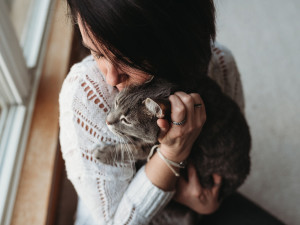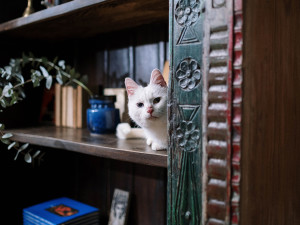Happy Cat, Happy Life: 5 Enrichment Tips to Keep Your Kitty Content
What is enrichment and why is it so important to keep your kitty happy?
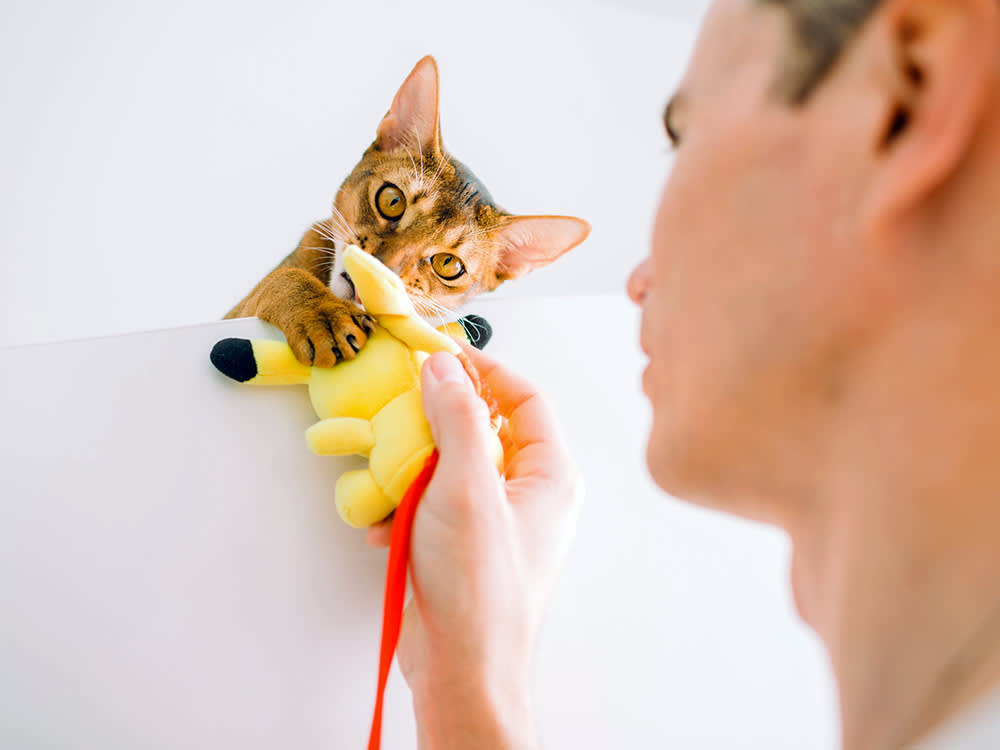
Share Article
Any cat parent can tell you – in between showing off snaps of their four-legged friend – that the well-being of their pet is a top priority. Yet, the myth that cats don’t need much attention still persists.
While some may think cats are ‘low-maintenance’ pets, this misconception can lead to behavioural problems and potential health issues, especially for indoor catsopens in new tab. This is where cat enrichment comes in, which experts believe can not only boost your pet’s happiness but also their health and overall well-being.
The five types of enrichment are physical, sensory, occupational, social and nutritional, and taking the time to learn about each type and how it helps your cat can provide a seriously holistic approach to meeting every need for your beloved cat.
Without cat enrichment strategies, cats can feel mentally and physically unfulfilled and you might face some unpleasant behavioural issues: “cats can get bored, as well as be under-socialised so can become fearful, anxious and sometimes aggressive – but also find their own ways to entertain themselves so may scratch furniture,” says Dr Tammie King, an animal behaviour specialist from the Waltham Petcare Science Instituteopens in new tab.
Zoe Blake, an animal behaviourist and veterinary nurse, explains just how crucial it is to get going with enrichment from a healthopens in new tab perspective, too. “Cats can become unwell if their environments don’t meet their needs and they become stressed, anxious and frustrated,” she says. “The rise in stress hormones can have lasting effects on the gut and bladder lining, and so inflammatory bowel conditions and cystitis are often presented to the veterinary clinic.”
“Cats can become depressed and start to become withdrawn from their environment,” says Zoe. “Stress can also lead to a generalised change in behaviour and this can then be displayed through aggression – optimising your cat’s environment to meet their needs is crucial if we are going to fulfil their emotional wellness.”
From feeding time and petting, all the way to ensuring your cat gets enough exercise, here’s how experts recommend you can enrich your pet’s life from every angle.
Physical enrichment
Physical enrichment is all about keeping your cat active and engaged. Indoor cats, in particular, might require additional opportunities to exercise to stay healthy. Zoe emphasises, “We have to ensure that the indoor environment offers the cat the opportunity to express as many of their natural behaviours as possible”.
There are many reasons your cat may spend most, if not all, their time indoors; from living by a busy road, to health issues to the simple fact that many of us don’t have any outdoor space to call our own (or cats to call ‘defensible territory’). If your cat spends their days indoors, it’s even more crucial that you encourage as much exercise as possible for your pet.
This is even more crucial when it comes to indoor cats, Dr King explains, because they “are often limited in what space and choice they have in their lives, as well as how much mental and physical stimulation they receive”.
It might seem daunting – particularly if your home is on the cosy side – but there is so much that you can do to help get them moving. If your feline friend has been acting particularly slothful recently and prefers napping over exercise (relatable) they might need encouragement to start with, and you can even begin by focusing on just a few minutes of exercise a day, and gradually upping it.
How to provide physical stimulation for your cat
Play tunnels are a great way to get going. They help cats lock into their natural instincts, all whilst improving muscular and cardiovascular health – so you’re stimulating and enriching your cat both mentally and physically all at the same time. As territorial animals, it also can provide cats with a sense of space that is exclusively theirs, giving them a safe haven they can head to if they are ever feeling a little stressed out.
Indoor climbing trees are also a fantastic option – especially if you’re struggling for space, because they allow you to make the most of the height in your home. Your cat working their way up and down will up their movement and fitness, but it also adds to a sense of security and provides them with a vantage point from which they can watch over their territory – all whilst giving them a dedicated scratching area that isn’t your sofa.
There are some seriously luxurious multi-level cat climbing towers out there, from the colourful and playfulopens in new tab to some design-focussed optionsopens in new tab that will be a pretty chic addition to any home. However, for a more budget-friendly option Dr King explains that even placing cardboard boxes around your home can be beneficial to your cat, alongside placing their bed high up, ideally “on top of some sturdy shelves”.
Sensory enrichment
As natural hunters, helping your cat to work their senses of sight, smell, taste, touch and sound is a key component to their well-being and can elevate their day-to-day life – particularly if your cat spends most, or all, of their time indoors.
This can be really simple, such as adding toys with different textures into their rotation of play, or other sensory-stimulating toys – such as those that include catnip for instance – for them to enjoy, this is especially useful tool for your cat to make the most whilst you’re out and about, or hard at work in your home office.
Another top expert tip is to be choosy about the times you invest in playing with your feline friend, because they’ll get the most out of it at certain times of day. Zoe Blake explains, “It is a common misconception that once cats reach adulthood they don’t play. All cats with the right stimulation and toys will play. Early morning and evening are good times as their natural body-clock is heightened”.
Equally, Zoe notes that “unlike a dog that you take to the park that might chase a ball for hours”, don’t be surprised if your cat only wants to engage with their enrichment toys for a few minutes at a time. “They do get bored easily,” she notes, but they will still be getting a lot out of even a short play session.
How to provide sensory stimulation for your cat
Cheap and cheerful enrichment strategies include making your own toys and feeding games – from a reach feeder constructed from toilet rolls and an empty shoebox, knitting your own mouse with which they can play pounce, playing bird TV for their entertainmentopens in new tab all the way to creating a cat tower from old cardboard boxes,opens in new tab there’s a lot you can do for your cat whilst still keeping an eye on your wallet.
If you are looking to invest a bit more financially in enrichment strategies, there are so many toys, accessories and gadgets available for purchase that can enhance your cat’s experience in the home and enriching their instincts and senses help keep them happy and healthy.
Occupational enrichment
Occupational enrichment involves activities that challenge your cat’s mind, such as puzzles and interactive games. These help maintain mental sharpness and provide satisfaction by solving problems by giving your cat a ‘job’, which can lead to improved behaviour and health in the long run.
Dr King explains that cat parents should “provide opportunities for their cats to undertake species-specific behaviours, enabling them to meet physical and emotional needs” and across all five enrichment types these can include encouraging “climbing, jumping, scratching, chasing, stalking, sniffing, rubbing and problem solving”.
How to provide occupational stimulation for your cat
Puzzles and games are great ways to promote your cat’s problem solving skills and help ensure they stay mentally sharp and engaged with their environment. It helps your pet stay tuned into their natural instincts and gives them the space to engage with their inherent skills – all whilst giving them satisfaction that comes with solving problems, which helps keep them happy and can improve their behaviour and health.
Social enrichment
Despite cats’ reputations as being seriously independent creatures, they still need regular social engagementopens in new tab to enrich their lives – good news for any cat parents who love cuddles themselves. This can be cat-to-cat relations or human-to-cats, too. So simply interacting with and petting your cat is an example of social enrichment.
However, each and every cat is going to have different needs when it comes to this one, so it’s important to tailor your approach to your pet’s personality. Dr King explains, it’s vital “to treat each cat as an individual” and pay a great deal of attention to “what they do and don’t like”.
For instance, if your cat is shy and doesn’t take to strangers naturally, don’t overwhelm your pet and force a petting session the next time you have guests. Instead, try and make sure you are carving out some time to give your cat some love and affection – within the limits they’re comfortable with. Your cat will likely signal (been there) when they’ve had enough, so it’s important to be tuned into their cues.
On the other end of the scale, if your cat is super social and demonstrates anxiety at being left alone for long periods, you might want to even think about adding a new pet to your home – providing in-built company and socialisation for your cat.
However, Zoe Blake notes that it’s not always as simple as adding another feline friend into the home. “Unhappy multi-cat households can lead to cats suffering from high levels of stress and anxiety, these can manifest in their health and behaviour,” she explains. “You may find they spray as they urinate, over-groom or pick up common stress-related illnesses such as cystitis. They may even leave the house and look to settle elsewhere.”
“All cats live within a territory and within this they need to feel safe and secure. They need to be able to eat/drink/toilet and rest without the fear of an enemy attack. Therefore, it is very important that their future home will meet these needs especially if you will be having two or more cats living together. We need to remember that free ranging cats would choose who they live with and so when we put cats together it may not necessarily work out.”
How to provide social stimulation for your cat
Despite their reputation for independence, cats thrive on social interaction. However, every cat has different social needs, so it’s essential to tailor your approach. Regular petting sessions or playing with your cat using interactive toys can fulfil their social needs.
Nutritional enrichment
Switching up your cat’s feeding routine is an incredibly simple and effective way of enriching their lives, and it doesn’t have to be complicated. Nutritional enrichment involves implementing stimulating practices that can satisfy your cat’s natural behaviours. Elevating eating time means helping them lock into their hunting impulses to make your pet have to work a little bit to get a treat or their dinner.
Creating this kind of fun and engaging challenge for your cat can be as easy as investing in a food-dispensing toy – or making a game up yourself. Some of the available toys even have different ranges of difficulty, which allows you to up the ante so your cat never gets bored. This helps keep their minds and instincts stay sharp, and keeps them occupied for a good chunk of time.
How to provide nutritional stimulation for your cat
Zoe Blake advocates “puzzle feeding” and giving “good quality high protein diets” to your feline friends, ensuring “that are provided in a way that enables them to problem solve”.
The format of the food also makes a difference, for instance whether you offer your cat wet or dry – or a combination – and exactly what kinds of tastes, textures, temperature and smell it provides.
You can also grab a bag of dry foodopens in new tab and hide pieces in different parts of your home – perhaps behind a curtain or under the sofa – leaving your cat a fun and engaging hunting challenge before they get their dinner.
Resources:
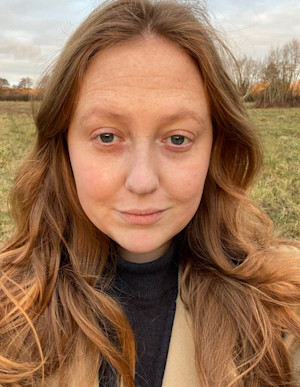
Emma Mackenzie
Emma Mackenzie is a freelance journalist based in London. When she isn’t working, she spends much of her time being informed that her two kittens can see a sliver of the bottom of their food bowl – the greatest offence they can imagine.
Related articles
![Woman holding brown kitten to her face.]()
8 Myths About Your Kitten – Busted By a Behaviourist
Forget everything you think you know...
![Two tabby cats cuddling each other with their eyes closed]()
Cats Aren’t Loners, After All
Cat behaviourist Kristiina Wilson on the importance of socialising cats
![Woman in a white sweater hugging her cat next to a window]()
Is Your Cat SAD?
Find out if your cat has seasonal depression, and how to combat it
Why Is My Cat Hiding?
No, they’re not on the lam. Here are four reasons your cat might be MIA

